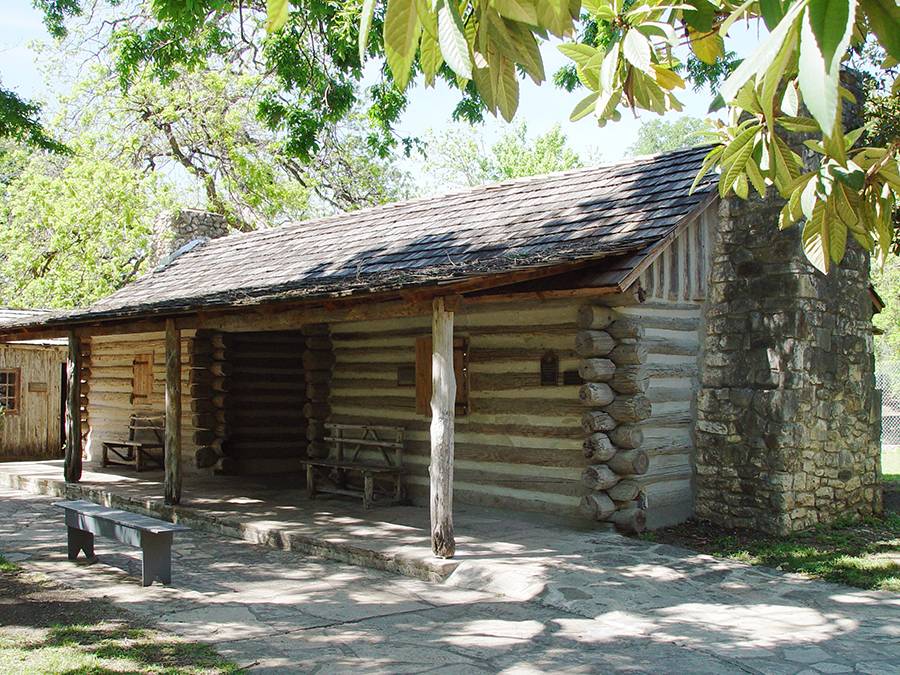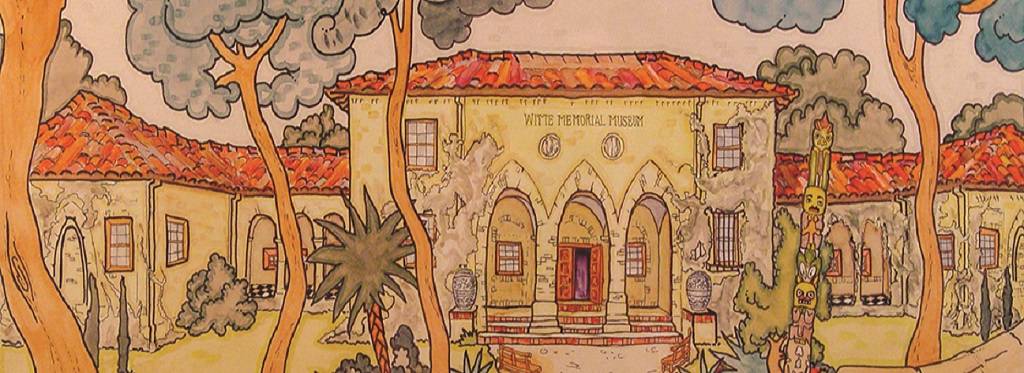Dog-Trot Cabin Replica, 1939

Dog-Trot Cabin Replica
Agency: National Youth Administration
Date: 1939
The log cabin was built on the Witte Museum campus along the San Antonio River in 1939 to show the type of dwellings that some Anglo-American settlers migrating from the United States brought to Texas. Telephone poles were donated by the San Antonio Public Service Company for construction and the National Youth Administration (NYA) and museum employees provided the labor. Charles Eckhart of Bandera taught the NYA workers how to make cypress shingles for the roof of the cabin. More than 10,000 shingles were needed.

On March 17, 1939, first lady Eleanor Roosevelt visited the Witte Museum to inspect work on the cabin. A passionate supporter of the NYA, Mrs. Roosevelt toured the United States visiting various projects. She wrote in her diary on March 20 “Friday afternoon I saw some WPA and NYA projects in San Antonio, Texas. Back of the Wittie Museum, a pioneer log hut is being built by NYA boys under the careful supervision of the museum directors. When building is finished, they will be taught to make the tiles for the fireplace by a young man of real ability who is producing and selling some very attractive work.” [Eleanor Roosevelt, "My Day, March 20, 1939," The Eleanor Roosevelt Papers Digital Edition (2017), accessed 5/17/2018, https://www2.gwu.edu/~erpapers/myday/displaydoc.cfm?_y=1939&_f=md055218]
This type of log cabin is typical of dwellings found in the eastern portions of Texas, which is heavily wooded and where the necessary materials are more readily available. Early Texans found the architecture of the log house suitable to the environment and climate. The cabin was built with two rooms and a breezeway or “dog trot” in between, a lean-to for a kitchen, and spacious porches. This classic frontier style provided excellent cross-ventilation, protection from the elements for people as well as animals, and outdoor living quarters in hot weather. The spaces between the logs were chinked with any suitable material at hand, which might have been clay, mud, caliche, or adobe.
The cabin is no longer at the Witte Museum.
Sources:
Eleanor Roosevelt Papers Project, "My Day Index," The Eleanor Roosevelt Papers Digital Edition (2018)
Witte Museum Archives
Woolford, Bess Carrol and Ellen Quilin. The Story of the Witte Memorial Museum, 1922-1960. San Antonio: San Antonio Museum Association, 1966.
